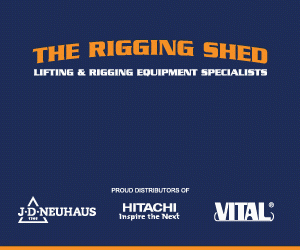)
New catapult effect safety awareness leaflet
IPAF issues a leaflet to warn users of (M)EWPs about the catapult effect, which can cause occupants to be ejected from the platform, leading to serious injury and death especially if occupants in boom-type machines are not wearing the correct personal fall protection equipment (PFPE).
The leaflet, entitled MEWP Catapult Effect, has been created by IPAF’s Safety and Technical team as part of the federation’s ongoing Don’t Fall For It! global safety campaign, which is targeted at reducing falls from the platform. It’s available in English and is free to download via IPAF’s website at www.ipaf.org/resources, with translated and region-specific versions of the leaflet to follow.
Brian Parker, IPAF’s head of safety and technical, said, “The previous IPAF Catapult leaflet was always very popular with members, particularly IPAF Training Centres, as it points out a specific effect that new and inexperienced operators of MEWPs in particular may be unaware of. We review all our guidance documents regularly and feel that this update offers really useful, practical steps to manage risk.
“We have condensed the key information needed to describe the catapult effect, what the main underlying causes are, and how to mitigate these. We’re confident that the new leaflet will be very helpful in raising awareness around this potentially dangerous situation that can arise when using MEWPs, and we are happy to offer this free of charge to end users as part of our ongoing Don’t Fall For It! safety campaign.”
The (M)EWP catapult effect occurs when stored energy or an impact to the (M)EWP’s structure causes a whiplash effect, which travels through the boom to the platform. Key advice on the new leaflet is broken down into three sections: Planning the job, including thorough site risk assessment and rescue planning, selecting the correct machine for the job, pre-start checks on the (M)EWP and ensuring operators are trained, familiarised and wearing the correct PFPE.
The section on the work environment touches on the need to plan and walk the route, looking out for obstructions and hidden hazards, as well as making sure the ground is firm and sufficient to take the weight of the MEWP and its load. Ground conditions must be observed during operation, as these can change, and MEWPs must be adequately segregated from other work areas, traffic and pedestrians.
The section on operating the (M)EWP advises maintaining continual observation around the (M)EWP at all times, using a banksman or spotter to identify hazards when driving the (M)EWP and the importance of care when driving over uneven ground. Occupants should never unclip the lanyard karabiner from the anchor point until exiting at ground level and should aim to prevent objects or materials falling from the platform.
Parker adds, “Experienced users of MEWPs will doubtless have encountered at least one catapult situation, and so will be aware of the risks and the potential energy that is generated; without a harness with the correct fall-restraint lanyard clipped to the anchor point, it is virtually impossible to counter the catapult effect, even when manoeuvring the MEWP in the lowered or stowed position.
“This updated leaflet is a timely reminder for operators of all levels of experience that the catapult effect can easily lead to serious incidents with catastrophic outcomes; we urge people to view and download this latest IPAF leaflet, to read and understand the simple safety messages and build them into your safe work planning.
“IPAF will follow up the launch of this leaflet with other related guidance updates and will continue to support the Don’t Fall For It! campaign through the publication of new Andy Access posters and Toolbox Talks over the coming weeks and months.”
- To view and download your free copy of the updated IPAF MEWP Catapult Effect leaflet, please visit www.ipaf.org/resources









